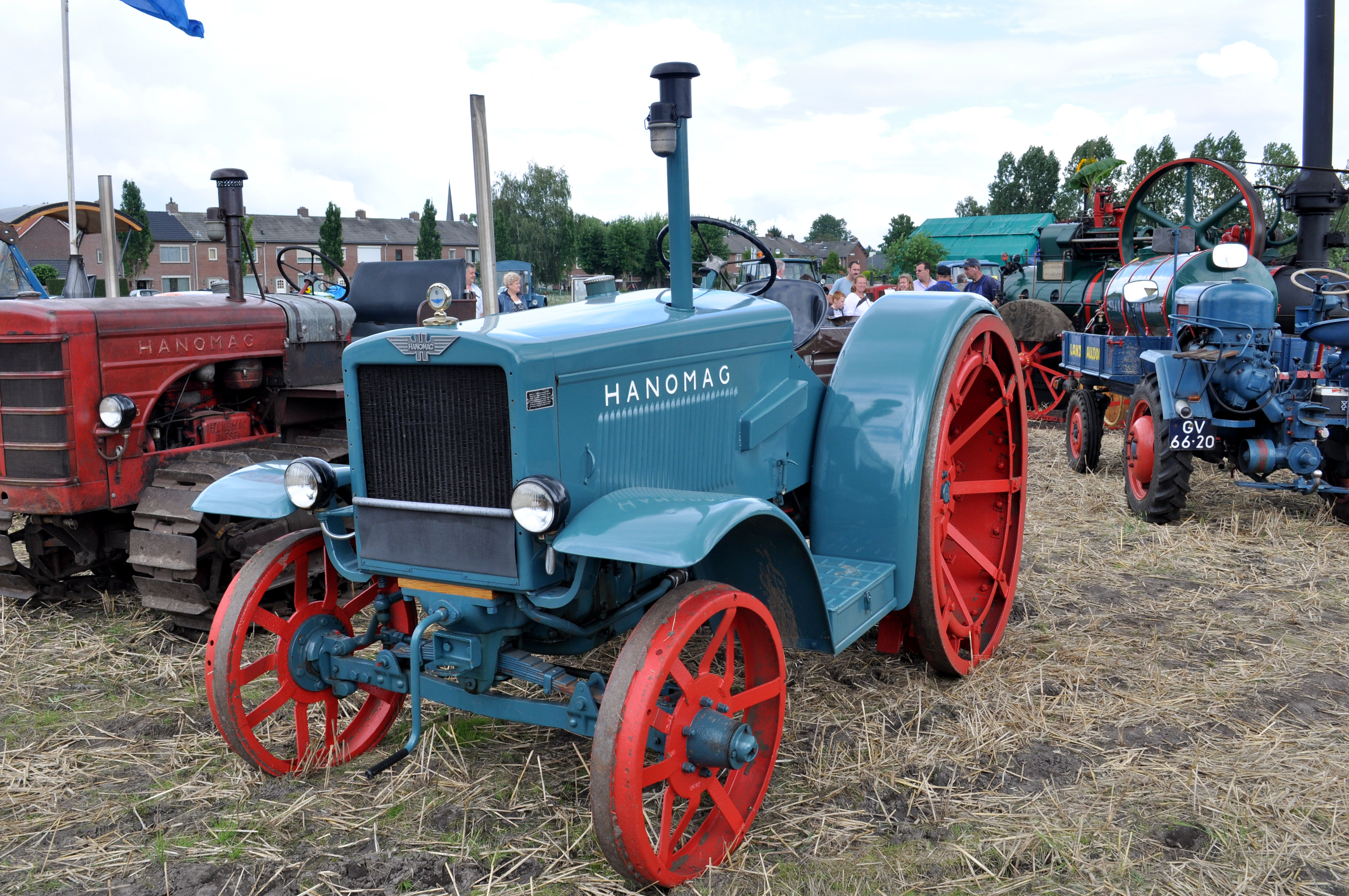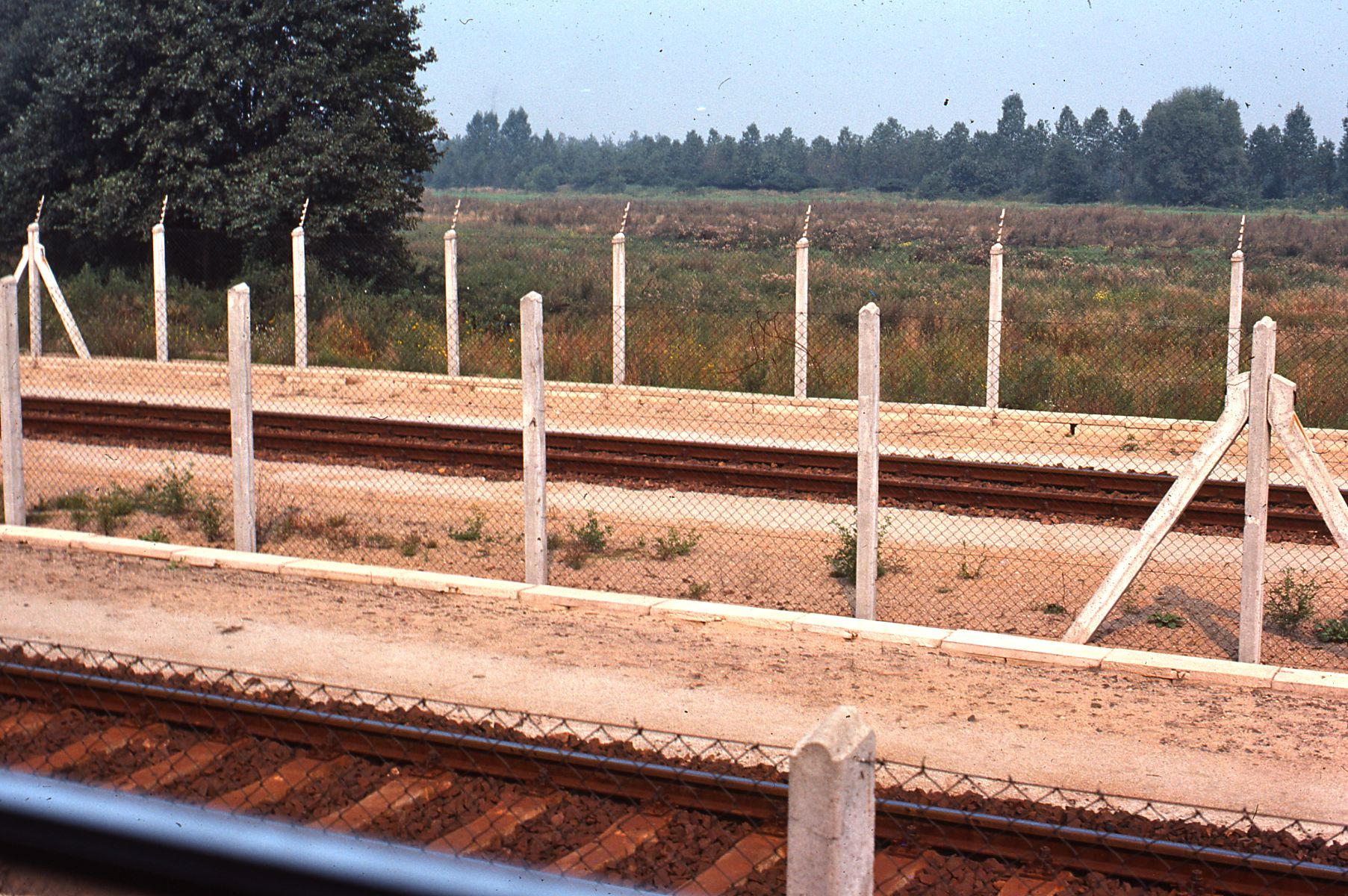|
DRG Class 81
The locomotives of the German DRG Class 81 were standard (''Einheitsdampflokomotiven'') goods train tank locomotives with the Deutsche Reichsbahn-Gesellschaft (DRG). In 1928, ten examples were delivered by the firm of Hanomag that matched the Class 80 locomotives in many details. The axles were all fixed rigidly to the frame, but the middle one had thinner wheel flanges. In contrast to the Class 80s, the Class 81 engines had a larger heating area and carried more coal and water. The delivery of 60 more vehicles was cancelled in 1940 due to the Second World War. The locomotives were mainly employed on heavy shunting duties. After their collection, the ten engines were allocated to the locomotive depots (''Bahnbetriebswerken'' or ''Bw'') of Goslar (81 001–005) and Oldenburg (81 006–010). In 1945 all the engines were in the Oldenburg area and went over to the Deutsche Bundesbahn. The last engine was taken out of service in October 1963. Number 81 005 was still working as an ind ... [...More Info...] [...Related Items...] OR: [Wikipedia] [Google] [Baidu] |
Hanomag
Hanomag (Hannoversche Maschinenbau AG, ) was a German producer of steam locomotives, tractors, trucks and military vehicles in Hanover. Hanomag first achieved international fame by delivering numerous steam locomotives to Grand Duchy of Finland, Finland, Kingdom of Romania, Romania and Kingdom of Bulgaria, Bulgaria before World War I and making of first tractor Hanomag R26 in 1924 in Germany. In 1925, they added automobiles to their line, additionally moving in 1931 into the production of construction machinery. Since 1989, the company has been part of the Komatsu Limited, Komatsu company. History The company dates back to 1835 when Georg Egestorff founded in Linden near Hanover a company called ''Eisen-Giesserey und Maschinenfabrik Georg Egestorff'' to build small steam engines. They soon started making farm machinery and in 1846 built their first railway locomotive for the Royal Hanoverian State Railways. By 1870 they had made 500 locomotives and in 1871 changed their name t ... [...More Info...] [...Related Items...] OR: [Wikipedia] [Google] [Baidu] |
Oldenburg (city)
Oldenburg () is an independent city in the state of Lower Saxony, Germany. The city is officially named Oldenburg (Oldb) (''Oldenburg in Oldenburg'') to distinguish from Oldenburg in Holstein. During the French annexation (1811–1813) in the wake of the Napoleonic war against Britain, it was also known as ''Le Vieux-Bourg'' in French. The city is at the rivers Hunte and Haaren, in the northwestern region between the cities of Bremen in the east and Groningen (Netherlands) in the west. It has a population of 170,000 (November 2019). Oldenburg is part of the Bremen/Oldenburg Metropolitan Region, with 2.37 million people. The city is the place of origin of the House of Oldenburg. Before the end of the German Empire (1918), it was the administrative centre and residence of the monarchs of Oldenburg. History Archaeological finds point to a settlement dating back to the 8th century. The first documentary evidence, in 1108, referenced ''Aldenburg'' in connection with Elim ... [...More Info...] [...Related Items...] OR: [Wikipedia] [Google] [Baidu] |
Standard Gauge Locomotives Of Germany
Standard may refer to: Symbols * Colours, standards and guidons, kinds of military signs * Standard (emblem), a type of a large symbol or emblem used for identification Norms, conventions or requirements * Standard (metrology), an object that bears a defined relationship to a unit of measure used for calibration of measuring devices * Standard (timber unit), an obsolete measure of timber used in trade * Breed standard (also called bench standard), in animal fancy and animal husbandry * BioCompute Standard, a standard for next generation sequencing * ''De facto'' standard, product or system with market dominance * Gold standard, a monetary system based on gold; also used metaphorically for the best of several options, against which the others are measured * Internet Standard, a specification ratified as an open standard by the Internet Engineering Task Force * Learning standards, standards applied to education content * Standard displacement, a naval term describing the weig ... [...More Info...] [...Related Items...] OR: [Wikipedia] [Google] [Baidu] |
Hanomag Locomotives
Hanomag (Hannoversche Maschinenbau AG, ) was a German producer of steam locomotives, tractors, trucks and military vehicles in Hanover. Hanomag first achieved international fame by delivering numerous steam locomotives to Finland, Romania and Bulgaria before World War I and making of first tractor Hanomag R26 in 1924 in Germany. In 1925, they added automobiles to their line, additionally moving in 1931 into the production of construction machinery. Since 1989, the company has been part of the Komatsu company. History The company dates back to 1835 when Georg Egestorff founded in Linden near Hanover a company called ''Eisen-Giesserey und Maschinenfabrik Georg Egestorff'' to build small steam engines. They soon started making farm machinery and in 1846 built their first railway locomotive for the Royal Hanoverian State Railways. By 1870 they had made 500 locomotives and in 1871 changed their name to ''Hannoversche Maschinenbau Actien-Gesellschaft vorm. Georg Egestorff, Linden v ... [...More Info...] [...Related Items...] OR: [Wikipedia] [Google] [Baidu] |
Railway Locomotives Introduced In 1928
Rail transport (also known as train transport) is a means of transport that transfers passengers and goods on wheeled vehicles running on rails, which are incorporated in tracks. In contrast to road transport, where the vehicles run on a prepared flat surface, rail vehicles (rolling stock) are directionally guided by the tracks on which they run. Tracks usually consist of steel rails, installed on sleepers (ties) set in ballast, on which the rolling stock, usually fitted with metal wheels, moves. Other variations are also possible, such as "slab track", in which the rails are fastened to a concrete foundation resting on a prepared subsurface. Rolling stock in a rail transport system generally encounters lower frictional resistance than rubber-tyred road vehicles, so passenger and freight cars (carriages and wagons) can be coupled into longer trains. The operation is carried out by a railway company, providing transport between train stations or freight customer facilit ... [...More Info...] [...Related Items...] OR: [Wikipedia] [Google] [Baidu] |
Deutsche Reichsbahn-Gesellschaft Locomotives
Deutsch or Deutsche may refer to: *''Deutsch'' or ''(das) Deutsche'': the German language, in Germany and other places *''Deutsche'': Germans, as a weak masculine, feminine or plural demonym *Deutsch (word), originally referring to the Germanic vernaculars of the Early Middle Ages Businesses and organisations *André Deutsch, an imprint of Carlton Publishing Group *Deutsch Inc., a former American advertising agency that split in 2020 into: ** Deutsch NY, a New York City-based advertising agency * Deutsche Aerospace AG *Deutsche Akademie, a cultural organisation, superseded by the Goethe-Institut *Deutsche Bahn, the German railway service *Deutsche Bank *Deutsche Börse, a German stock exchange * Deutsche Geophysikalische Gesellschaft, the German Geophysical Society *Deutsche Grammophon, a German classical music record label *Deutsch Group, an international connector manufacturer *Deutsche Luft Hansa (1926–1945) * Deutsche Lufthansa (since 1953), an airline *Deutsche Marine, t ... [...More Info...] [...Related Items...] OR: [Wikipedia] [Google] [Baidu] |
Steam Locomotives Of Germany
Steam is a substance containing water Water (chemical formula ) is an inorganic, transparent, tasteless, odorless, and nearly colorless chemical substance, which is the main constituent of Earth's hydrosphere and the fluids of all known living organisms (in which it acts as ... in the gas phase, and sometimes also an aerosol of liquid water droplets, or air. This may occur due to evaporation or due to boiling, where heat is applied until water reaches the enthalpy of vaporization. Steam that is saturated or superheated steam, superheated is invisible; however, "steam" often refers to wet steam, the visible mist or aerosol of water droplets formed as water vapor condensation, condenses. Water increases in volume by 1,700 times at standard temperature and pressure; this change in volume can be converted into work (physics), mechanical work by steam engines such as reciprocating engine, reciprocating piston type engines and steam turbines, which are a sub-group of steam ... [...More Info...] [...Related Items...] OR: [Wikipedia] [Google] [Baidu] |
List Of DRG Locomotives And Railbuses
The railway vehicle classes covered by this list of DRG locomotives and railbuses belonged to the ''Deutsche Reichsbahn-Gesellschaft'' or DRG (1924–37) and its successor, the ''Deutsche Reichsbahn'' or DRB (post 1937). The DRG (lit. German Imperial Railway Company) was formed under the terms of the Dawes Plan from the ''Deutsche Reichseisenbahnen'' (lit. Imperial Railways), a merger of the various German state railways after the First World War. The tables are generally organized in accordance with the DRG's numbering schemes for the various types of vehicles. A brief explanation of this may be found in the articles on the numbering scheme of the German railways and German steam locomotive classification. After the end of the Second World War the West German part of the DRB became the ''Deutsche Bundesbahn'' (DB), but its East German counterpart continued to be called the ''Deutsche Reichsbahn'' (DR) – see Deutsche Reichsbahn (East Germany). The DB and the DR later introduc ... [...More Info...] [...Related Items...] OR: [Wikipedia] [Google] [Baidu] |
Nied
The Nied (; ) is a river in Lorraine, France, and Saarland, Germany. It is a left tributary of the Saar. It is formed where two streams converge: the ''Nied allemande'' ("German Nied") and the ''Nied française'' ("French Nied"), which join in Condé-Northen. The "Nied française" is the bigger of the two, with a length of , and its source is near Morhange. Another town on the "Nied française" is Pange. The other stream, the "Nied allemande" is long, with its source in Seingbouse, east of Saint-Avold. Another town on the Nied allemande is Faulquemont. The Nied itself is long, of which are in Germany. It flows through Bouzonville, and joins the Saar in Rehlingen-Siersburg Rehlingen-Siersburg is a municipality in the district of Saarlouis, in Saarland, Germany. It is situated on the river Saar, approx. 8 km northwest of Saarlouis, and 30 km northwest of Saarbrücken. Geography Location Rehlingen i .... See also * List of rivers of Saarland * List ... [...More Info...] [...Related Items...] OR: [Wikipedia] [Google] [Baidu] |
Deutsche Bundesbahn
The Deutsche Bundesbahn or DB (German Federal Railway) was formed as the state railway of the newly established Federal Republic of Germany (FRG) on 7 September 1949 as a successor of the Deutsche Reichsbahn-Gesellschaft (DRG). The DB remained the state railway of West Germany until after German reunification, when it was merged with the former East German Deutsche Reichsbahn (DR) to form Deutsche Bahn, which came into existence on 1 January 1994. Background After World War II, each of the military governments of the Allied Occupation Zones in Germany were ''de facto'' in charge of the German railways in their respective territories. On 10 October 1946, the railways in the British and American occupation zones formed the ''Deutsche Reichsbahn im Vereinigten Wirtschaftsgebiet'' (German Imperial Railway in the united economic area), while on 25 June 1947, the provinces under French occupation formed the Südwestdeutsche Eisenbahn. With the formation of the FRG these succes ... [...More Info...] [...Related Items...] OR: [Wikipedia] [Google] [Baidu] |
Goslar
Goslar (; Eastphalian: ''Goslär'') is a historic town A town is a human settlement. Towns are generally larger than villages and smaller than city, cities, though the criteria to distinguish between them vary considerably in different parts of the world. Origin and use The word "town" shares ... in Lower Saxony, Germany. It is the administrative centre of the Goslar (district), district of Goslar and located on the northwestern wikt:slope, slopes of the Harz mountain range. The Old Town of Goslar and the Mines of Rammelsberg are UNESCO World Heritage Sites for their millenium-long testimony to the history of ore mining and their political importance for the Holy Roman Empire and Hanseatic League. Each year Goslar awards the Goslarer Kaiserring, Kaiserring to an international artist, called the "Nobel Prize" of the art world. Geography Goslar is situated in the middle of the upper half of Germany, about south of Braunschweig, Brunswick and about southeast of the st ... [...More Info...] [...Related Items...] OR: [Wikipedia] [Google] [Baidu] |





